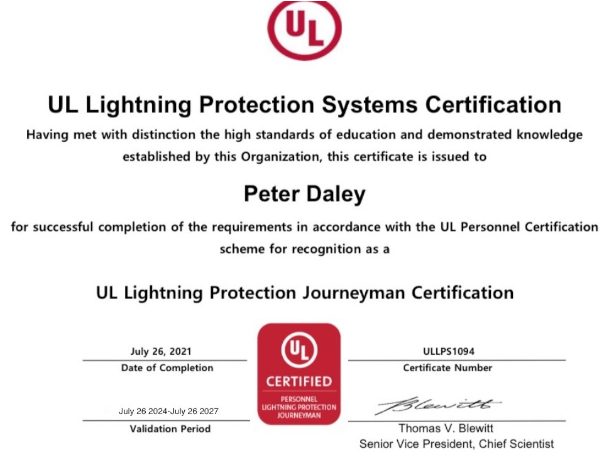Debunking 4 Lightning Myths

Lightning is one of Mother Nature's most random, unpredictable phenomenon that occurs the most during summertime, when thunderstorms are most common. It's a beautiful, somewhat scary thing to view from afar, but lightning is actually a deadly wonder of the world, which is why when thunderstorms come along, it's safest to head inside.
There are a lot of myths about lightning out there that have been misconstrued and changed over time. In this article, the lightning protection experts at Lightning Protectors are going to debunk some of the most common lightning myths so you can be more informed about lightning and how to stay safe around it.
Myth 1: Beneath A Tree Is A Safe Space To Take Shelter During A Storm.
Fact: Taking shelter under a tree is actually one of the worst things you can do during a thunderstorm. Trees are a tall, straight structure that lightning could easily strike, and if it does hit the tree, you could be electrocuted by the ground charge that spreads out from the tree after being struck. Using trees as shelter is the second most common cause of lightning casualties.
Myth 2: Lightning Never Strikes The Same Place Twice
Fact: Lightning is known to strike the same place multiple times, especially tall, isolated objects like buildings or towers. Some of the tallest buildings in the world, like the Empire State Building, are hit close to two dozen times a year, sometimes up to 10 times in a storm.
Myth 3: Wearing Metal Jewelry Attracts Lightning
Fact: The presence of metal alone does not attract lightning. Height, shape, and isolation are three of the most prominent factors that contribute to a lightning strike, meaning it could still strike you if you are the only object in an area! This is why it's vital to take cover during a storm. Touching or being close to metal objects like light poles or fences can be unsafe because they fit the bill for lightning attraction.
Myth 4: Lie On The Ground Ifs You're Outside During A Storm
Lying on the ground actually makes it easier for you to get electrocuted during a storm. Lightning could strike the ground, unloading electricity in every direction. If you're lying on the ground, you are making much more of your body vulnerable by spreading it out on the ground to receive electricity. The safest way to protect yourself from lightning during a storm is to find shelter in a house.
Lightning Protection Is Vital
Lightning is often underestimated, but kills more than 20 people yearly. If you want to protect your home and family from lightning strikes, consider looking into lightning protection systems for your home, like lightning rods or surge protectors. They are easy ways to ensure that your home and your loved ones are protected from the dangers and damages that lightning can bring.

